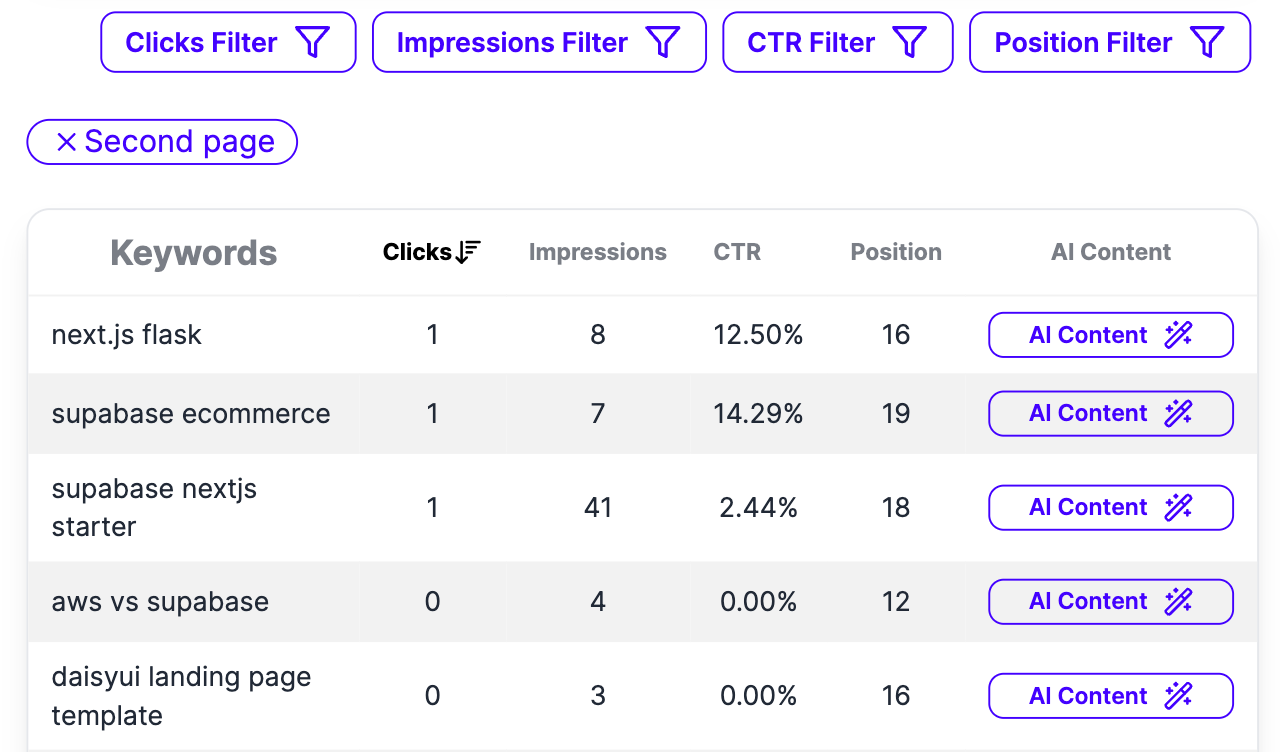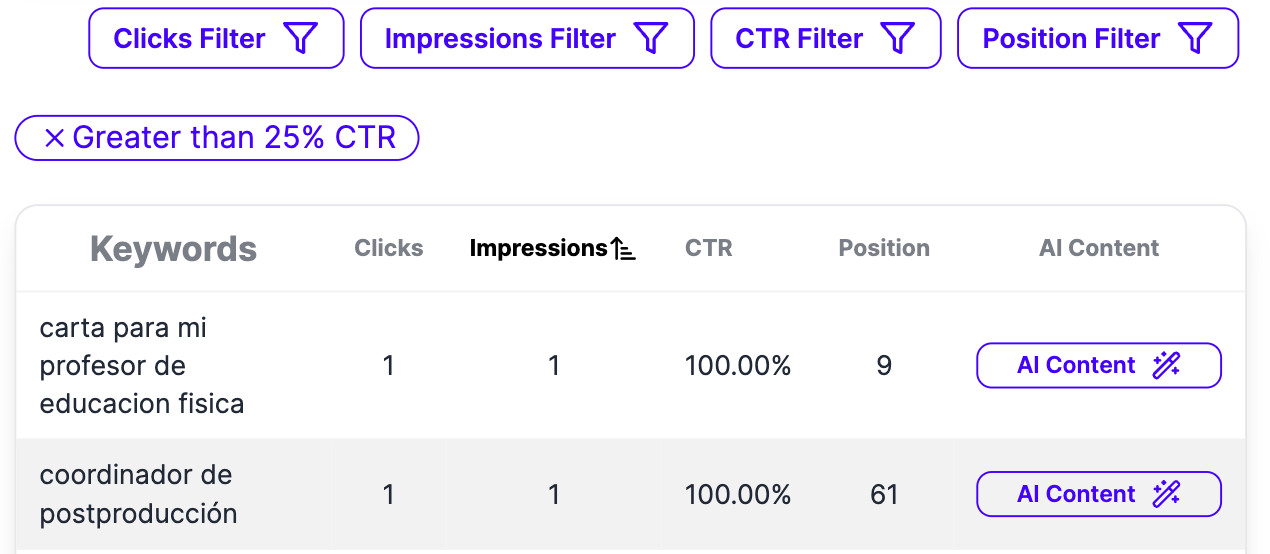
In the digital age, content is king, but even the most diligent content creators can hit a creative block. Fortunately, Google Search Console (GSC) offers a treasure trove of insights that can spark content ideas, helping you to enhance your website's visibility and engagement. Here's how you can leverage GSC to uncover valuable content ideas:
Keywords that rank on the second page of Google search results are hidden gems waiting to be polished. These terms are already somewhat relevant to your site's content, indicating that with a bit more optimization and focus, they could break into the coveted first page, significantly increasing your site's visibility.
How to Leverage These Keywords:
In order to find these keywords, the easies way is to use QuickSEO. It will automatically fetch all your data from Google Search Console and show you the keywords that are ranking on the second page. Thanks to its powerful keywords filters.

High impressions with low CTR indicate that users see your content in search results but choose not to click on it. This discrepancy can be a signal to revisit your titles, meta descriptions, and the content's alignment with the search intent.
How to Leverage These Keywords:
In QuickSEO, you can easily find these keywords by using the filters. Just select the CTR filter and set it to less than 25%. This will show you all the keywords that have a CTR of less than 25%. Than sort the data by impressions to find the keywords with high impressions but low CTR.

Keywords that have a high CTR but low impressions are indicative of content that resonates well with your audience but isn't seen by as many users as it could be. This scenario suggests a potential for growing traffic by increasing the visibility of these underexposed gems.
How to Leverage These Keywords:
Similar to the previous example, you can use QuickSEO to find these keywords. Just select the CTR filter and set it to more than 25%. This will show you all the keywords that have a CTR of more than 25%. Than sort the data by impressions to find the keywords with high CTR but low impressions.

Google Search Console is an invaluable tool for content creators looking to refine their strategy and uncover new opportunities. By focusing on keywords that are on the cusp of breaking through, those that indicate a mismatch between expectations and delivery, and those that have untapped potential, you can systematically enhance your content's reach and impact. And QuickSEO can help you to easily find these keywords and take action on them.